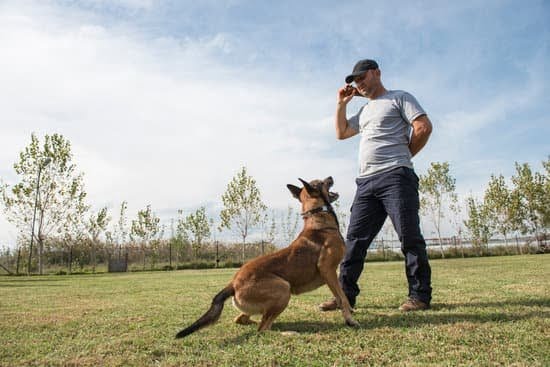When to start training a service dog is a crucial question for anyone considering bringing a valuable companion into their lives. Service dogs play an essential role in supporting individuals with disabilities, providing assistance and increasing independence. Understanding the process of training and when to begin this journey is vital in ensuring the successful development of a service dog.
Service dogs are specifically trained to perform tasks that assist people with disabilities, including guiding individuals who are blind, alerting those who are deaf, pulling wheelchairs, and even detecting medical conditions such as seizures. The importance of proper training cannot be overstated; it is the foundation for their ability to effectively support their handlers.
In this article, we will explore the various aspects of training a service dog, from understanding the different types of service dogs to considerations before starting the training process. We will also delve into the ideal age for beginning this training, as well as the basic and advanced training processes.
Lastly, we will discuss the significance of consistency and patience in training and when it may be necessary to seek professional assistance from a trainer. If you are considering embarking on this rewarding journey of training a service dog, read on to gain valuable insights.
The Importance of Proper Training for Service Dogs
Service dogs play a crucial role in providing assistance and support to individuals with disabilities. They are trained to perform specific tasks that help their handlers with daily activities and improve their quality of life. Proper training is essential for service dogs to ensure they are able to perform their duties effectively and reliably.
- Understanding the Different Types of Service Dogs: There are various types of service dogs, including guide dogs for the visually impaired, hearing dogs for the deaf or hard of hearing, mobility assistance dogs, seizure alert/response dogs, and psychiatric service dogs. Each type of service dog requires specific training tailored to the needs of their handler.
- Considerations Before Starting Training: Before embarking on the training process, it is important to consider the temperament, health, and breed of the dog. Not all dogs are suitable for becoming service dogs, so a thorough assessment should be conducted to determine if a dog has the right qualities for this role.
- Ideal Age to Begin Training a Service Dog: While it is never too late to start training a service dog, it is generally recommended to begin basic obedience training at a young age when the dog is more receptive to learning. However, advanced task-specific training should be introduced at an appropriate time based on the individual needs of the handler.
Proper training plays a critical role in shaping a service dog’s behavior and abilities, ultimately determining its effectiveness in providing assistance to its handler. By understanding the different types of service dogs, considering key factors before starting training, and identifying the ideal age to begin training, individuals can set their service dogs up for success in fulfilling their vital roles.
Understanding the Different Types of Service Dogs
Service dogs are invaluable companions that provide assistance to individuals with disabilities. There are various types of service dogs, each trained to perform specific tasks depending on the needs of their handlers.
One common type of service dog is the guide dog, which assists individuals with visual impairments by guiding them through obstacles and helping them navigate their surroundings safely. Other types of service dogs include hearing dogs, who alert deaf or hard-of-hearing individuals to important sounds like doorbells or alarms, and mobility assistance dogs, who help individuals with physical disabilities by retrieving items, opening doors, and providing stability when walking.
Another important category of service dogs is psychiatric service dogs, which provide support to individuals with mental health conditions such as anxiety disorders, post-traumatic stress disorder (PTSD), and depression. These specially trained dogs can offer comfort during stressful situations, interrupt harmful behaviors, and provide a sense of security to their handlers.
Additionally, there are also medical alert dogs who can detect changes in their handler’s health condition such as fluctuating blood sugar levels in individuals with diabetes or impending seizures in those with epilepsy.
It is important for individuals considering training a service dog to understand the different types available and choose one that best suits their specific needs. By recognizing the range of tasks that various service dog types can perform, handlers can make an informed decision about which type of service dog will best enhance their daily lives and provide the necessary support they require.
Considerations Before Starting Training
Before embarking on the journey of training a service dog, there are several important considerations to keep in mind. It’s crucial to understand the commitment and responsibility involved in training a service dog, as it requires patience, time, and dedication. Here are some key considerations before starting the training process:
1. **Lifestyle and Commitment**: Potential service dog trainers should assess their lifestyle and ability to commit to the rigorous training process. Service dogs require constant attention, consistent training sessions, and regular exercise. It’s important for individuals to evaluate whether they can accommodate these needs in their daily lives.
2. **Financial Investment**: Training a service dog can be a significant financial investment. From purchasing the right equipment to enrolling in professional training programs, individuals should consider the costs associated with training a service dog.
3. **Legal Considerations**: Depending on the location, there may be specific laws and regulations related to owning and training a service dog. It’s essential to research and understand the legal requirements and responsibilities associated with having a service dog.
By carefully considering these factors before starting the training process, individuals can ensure that they are fully prepared for the rewarding yet challenging journey of training a service dog. Each consideration plays a vital role in creating a positive and conducive environment for both the trainer and the service dog during their training journey.
Ideal Age to Begin Training a Service Dog
Training a service dog is a critical and rewarding process that requires patience, dedication, and expertise. One of the most important considerations when starting the training process is the ideal age to begin. The developmental stage of a dog plays a crucial role in how effectively they can learn and retain training commands, as well as how well they can adapt to different environments and situations.
Experts recommend starting the training process for service dogs at around 6 to 8 weeks of age. At this stage, puppies are highly impressionable and are more receptive to learning new commands and behaviors. It is during this time that they also start socializing with other dogs and humans, making it an ideal period to introduce them to various environments, sounds, and experiences that they may encounter in their future role as a service dog.
It’s important to note that while it is recommended to start training at a young age, it is equally important not to overwhelm the puppy with excessive or intensive training sessions. Training should be introduced gradually, focusing on basic obedience commands such as sit, stay, come, and leash walking.
This helps build a strong foundation for additional advanced training as the dog matures. By starting the training process at an early age and approaching it with patience and consistency, owners can set their service dogs up for success in their vital roles of providing support and assistance.
The Basic Training Process for Service Dogs
In addition to obedience and socialization training, service dogs often undergo specific task training based on the needs of their future handlers. For example, guide dogs receive extensive navigation training to assist individuals who are blind or visually impaired, while mobility assistance dogs may learn how to retrieve items or open doors for individuals with physical disabilities.
Service dog training may also include desensitization to loud noises, distractions, and other environmental factors that they may encounter in public settings. This is crucial in ensuring that the service dog remains focused on its tasks regardless of the surrounding stimuli. Positive reinforcement techniques are commonly used during this process to encourage desired behaviors and build a strong bond between the dog and its handler.
| Training Aspect | Description |
|---|---|
| Obedience Training | Involves teaching commands such as sit, stay, come, and heel |
| Task-Specific Training | Focused on teaching specialized skills based on the individual needs of the handler |
| Socialization Training | Aims to acclimate the service dog to various environments and people |
Advanced Training for Service Dogs
After the basic training process, service dogs move on to advanced training. This stage involves more specific and complex tasks that are tailored to the individual needs of their future owner. Advanced training focuses on honing the skills necessary for the service dog to perform specialized tasks such as opening doors, retrieving items, turning on/off lights, providing physical support, and even responding to medical emergencies.
During advanced training, service dogs learn how to remain calm and focused in distracting environments such as crowded public spaces, loud noises, and other challenging situations. They are also trained to ignore food and other distractions while they are working. Advanced training helps the service dog become more efficient in assisting their handler and promotes a stronger bond between the dog and its owner.
It is crucial for advanced training to be conducted by experienced professionals who understand the specific needs of individuals with disabilities or medical conditions. Trainers should have expertise in teaching advanced obedience commands and customizing tasks based on the unique requirements of each service dog’s future handler. Additionally, trainers must ensure that service dogs are provided with a positive environment that encourages their learning and growth throughout this critical phase of their development.
Importance of Consistency and Patience in Training
Consistency Is Key
Consistency is crucial in the training process of a service dog. This means that the same commands, cues, and expectations need to be communicated and reinforced consistently by everyone involved in the dog’s training. Any inconsistency can lead to confusion for the dog and hinder their progress. It’s important for trainers and handlers to work together to establish and maintain consistent training methods.
The Role of Patience
Patience is another essential element in training a service dog. Dogs, like humans, all learn at their own pace, and it’s important not to rush or push them too hard. Training sessions should be kept short, positive, and focused on one skill at a time. It’s also important to be patient with any setbacks or mistakes that may occur during the training process.
Rewarding Good Behavior
In addition to consistency and patience, it’s important to reward good behavior during training. Positive reinforcement encourages the desired behaviors and helps the dog understand what is expected of them. This can include verbal praise, treats, or access to a favorite toy. By consistently rewarding good behavior, the service dog will be more motivated to continue learning and performing as needed when they are fully trained and working.
Contacting a Professional Trainer for Assistance
When it comes to training a service dog, seeking the help of a professional trainer can make a world of difference in the success and effectiveness of the training process. Professional trainers have the expertise, experience, and resources needed to provide specialized training for service dogs tailored to their unique roles and responsibilities.
Benefits of Professional Training
Professional trainers have extensive knowledge in canine behavior, psychology, and training methods, which are essential for developing a well-trained service dog. They can assess the specific needs of both the individual with disabilities and the tasks required of the service dog, creating a customized training plan that addresses these needs. Additionally, professional trainers understand the legal requirements and standards for service dogs, ensuring that the dog is trained to meet these criteria.
Choosing the Right Trainer
When seeking assistance from a professional trainer for service dog training, it is crucial to select someone with experience in training service dogs specifically. Look for trainers who are certified by reputable organizations or have relevant credentials that demonstrate their expertise in this area. Additionally, consider referrals from individuals who have successfully trained their own service dogs or from organizations that specialize in providing assistance animals.
By contacting a professional trainer for assistance in training a service dog, individuals can access the expertise and support needed to prepare their canine companion for their important role. Through proper training from a knowledgeable professional, service dogs can fulfill their duties effectively and make a meaningful impact on the lives of those with disabilities.
Conclusion
In conclusion, the process of training a service dog is a rewarding journey that requires time, patience, and dedication. Whether it’s for mobility assistance, therapy, or other specialized tasks, a well-trained service dog can make a significant impact on the lives of their handlers. It is important to understand the different types of service dogs and consider all factors before beginning the training process.
While there may be different opinions on the ideal age to start training a service dog, it is crucial to prioritize the health and well-being of the dog. The basic and advanced training processes are essential in ensuring that the service dog is equipped with the necessary skills to perform their designated tasks effectively. Consistency and patience throughout the training process are key elements in developing a strong bond between the service dog and its handler.
In some cases, seeking assistance from professional trainers may be necessary to ensure that the service dog receives proper training. With their expertise and guidance, handlers can enhance their abilities to communicate effectively with their dogs, ultimately leading to successful outcomes in training. The rewarding journey of training a service dog not only impacts the lives of individuals with disabilities but also creates invaluable companionship and support for those in need.
Frequently Asked Questions
What Is the Best Age to Train a Service Dog?
The best age to train a service dog is generally between the ages of 1-2 years old. It’s important for the dog to have reached physical and mental maturity before beginning its training. Starting too early can lead to behavioral issues later on, while starting too late may limit the dog’s working life as a service animal.
Why Does It Take 2 Years to Train a Service Dog?
It takes around 2 years to train a service dog because of the extensive training and socialization required. Service dogs need to be reliable, well-behaved, and responsive in various environments and situations. This level of training takes time and consistency to ensure that the dog is fully prepared for its role as a service animal.
How Do I Teach My Dog to Be a Service Dog?
Teaching a dog to become a service dog involves consistent training, exposure to various environments, obedience training, and socialization with different people and animals. It’s essential to focus on behaviors necessary for its specific service role, such as retrieving items, opening doors, or providing emotional support.
Seeking guidance from professional trainers or programs specializing in service dog training is highly recommended for those looking to train their own service dog.

Welcome to the blog! I am a professional dog trainer and have been working with dogs for many years. In this blog, I will be discussing various topics related to dog training, including tips, tricks, and advice. I hope you find this information helpful and informative. Thanks for reading!





